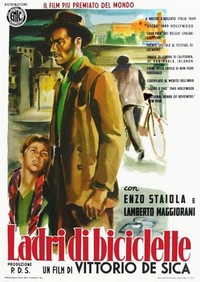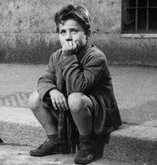
Ladri di Biciclette (1948)
The Bicycle Thief / The Bicycle Thieves

Raiting: ![]() 8,3 /10
8,3 /10
Genre: Drama
Director: Vittorio De Sica
Stars: Lamberto Maggiorani, Enzo Staiola and Lianella Carell
Country: Italy
Release date: 24 November 1948
Length: 93 minutes

